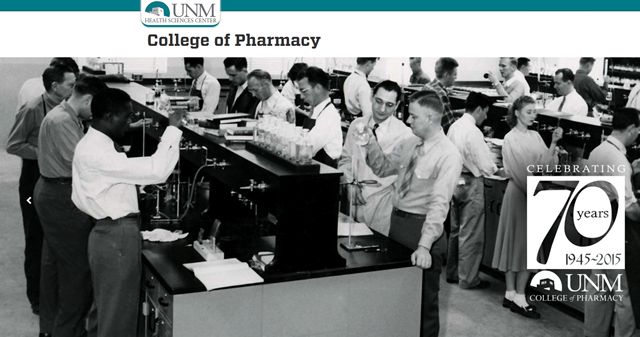
Pharmaceutical Sciences ETDs
Publication Date
Spring 7-2019
Abstract
Mycobacterium tuberculosis (Mtb) is an intracellular pathogen which can remain dormant within the human body for years (latent tuberculosis), and once active requires extensive multidrug therapies for treatment. Long-term antibiotic(s) exposure have led to the emergence of multidrug-resistant (MDR) and extensively drug-resistant (XDR) strains which require novel treatment approaches to combat Mtb resistance. Mtb may also utilize efflux pumps to expel antibiotics and promote bacterial survival, potentially mediating drug tolerance, which has been hypothesized to contribute to antibiotic resistance. Efflux pump inhibitors (EPIs) such as verapamil (VER) may potentiate effects of first-line anti-tubercular drugs (ATDs) such as rifampicin (RIF).
The goal of this project is to formulate and characterize a microparticulate inhalational delivery system consisting of a sustained released (SR) EPI and immediate release (IR) RIF. This formulation can be beneficial by (1) allowing for higher bactericidal concentrations at the site of infection when compared to systemic delivery, (2) improved bactericidal killing with efflux pump inhibition, potentially leading to shorter treatment durations, and (3) combating mechanisms that can contribute to the selection of drug-resistant Mtb.
We hypothesize that formulating the VER (the model EPI) into a SR system through the integration of the polymer Eudragit E PO (EPO) in combination with IR RIF through the integration of mannitol and leucine (ML) will potentiate the anti-tubercular activity of our formulation against Mtb, compared to traditional systemic delivery with no EPI. The slow release of VER will potentially prolong the inhibition of efflux pumps; further, concentration-dependent RIF will be immediately released thus allowing high intra-bacterial concentrations of the ATD. This novel formulation exploits properties of the EPO polymer, which is soluble at pH below 5.0, such that once the microparticles are taken up by the alveolar macrophage (in which Mtb resides), the entire payload will be immediately released. Such a formulation could improve the sterilizing activity of RIF which could decrease the total amount of ATD required and potentially shorten treatment durations.
Microparticles (MPs) with VER and RIF were formulated using a Buchi 290 laboratory scale mini-spray dryer in aqueous solvents. Briefly, MPs of IR-RIF, IR-VER, and SR-VER were prepared. These powders were further mixed homogenously to produce the formulations of interest (IR-RIF/IR-VER and IR-RIF/SR-VER). MPs were characterized for volumetric and aerodynamic particle sizing using Malvern Mastersizer 3000 with an attached dry powder disperser (Aerosizer), and a Next Generation Impactor (NGI, Copley Scientific, UK), respectively. For all powders (individual and mixed), we were able to achieve a volumetric diameter (D-50) in the size range of 1.77 - 2.63 µm. Further, we were able to achieve a mass median aerodynamic diameter (MMAD) in the size range 2.45 – 4.95 µm for the above powders. With regard to the mixed powders, the IR-RIF/IR-VER formulation achieved a RIF:VER ratio of 2.33:1 (wt/wt). The IR-RIF/SR-VER formulation achieved a RIF:VER ratio of 2.58:1 (wt/wt). For the IR-RIF/IR-VER mixed powder both drugs showed approximately 70% drug release at 4 hours. With the IR-RIF/SR-VER mixed powder, however, the RIF component achieved only 60% drug release at 4 hours where the VER component was able to achieve approximately 80% release. For both formulations a release of nearly 100% was achieved for both the EPI and ATD.
The in vitro cytotoxicity of the IR-RIF/IR-VER formulation at 1 milligram (of dry powder) per milliliter after 24 hours of exposure led to only 14.47% ± 0.29% THP-1 cellular viability. Lower concentrations achieved higher cell viability, with approximately 45% for the 500 micrograms per milliliter, and over 99% cellular viability at concentrations of 250 micrograms per milliliter or less. IR-RIF/SR-VER formulation was around 30% cell viability for all concentrations evaluated. The in vitro bacterial (Mycobacterium smegmatis) killing of the IR-RIF/IR-VER formulation achieved higher killing of the mycobacterium at lower drug concentrations when compared to that of the IR-RIF/SR-VER formulation.
The above data demonstrated the feasibility of spray drying to develop an inhalable dry powder formulation with properties suitable for delivery to the deep lung (based on aerodynamic size), macrophage uptake (based on volumetric size), toxicity studies (in THP-1 cells) and mycobacterial killing (using M. smegmatis as a surrogate mycobacteria). The data also suggest that our IR formulation was less toxic to macrophages and more effective in mycobacterial killing at lower concentrations than our SR formulation. The drug release studies, however, provided inconclusive results for both the formulations.
First Committee Member (Chair)
Pavan Muttil
Degree Name
Pharmaceutical Sciences
Second Committee Member
Linda Felton
Level of Degree
Masters
Third Committee Member
Graham Timmins
Department Name
College of Pharmacy
Project Sponsors
American Foundation for Pharmaceutical Education
Language
English
Document Type
Thesis
Keywords
Tuberculosis, Efflux Pump Inhibitors, Rifampin or Rifampicin, Drug Formulation, Inhalation Therapy
Recommended Citation
Miller, Elliott K.. "STRATEGIES TO COMBAT DRUG-RESISTANT TUBERCULOSIS: INHALABLE MICROPARTICLES FORMULATED WITH ANTI-TUBERCULAR ANTIBIOTICS AND EFFLUX PUMP INHIBITORS." (2019). https://digitalrepository.unm.edu/phrm_etds/23
